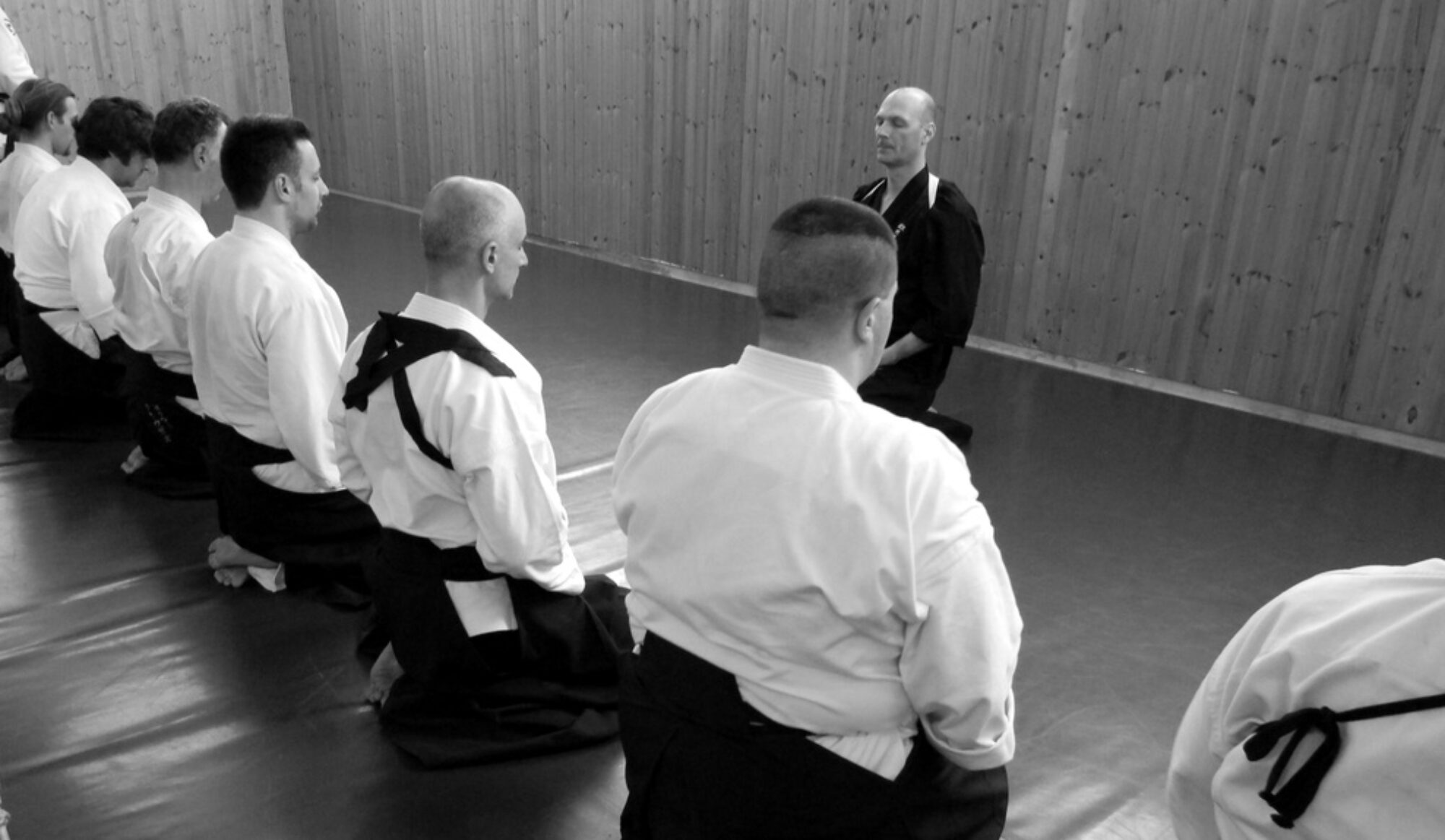Clarifications on the origin of the character “Bu” “武”
The background of a false interpretation
In Asia as in the West, we often speak of the first Kanji of “Budo” (武道), the “Bu” (武), meaning “stopping the spear”. This is an interpretation that dates back almost to the origin of Budo, that aimed to draw the picture of peaceful martial arts, ignoring historical facts. Let’s go back to the origins of the term to determine its true meaning.
The current use of the Kanji “Bu” and its origin
The Kanji are the Chinese characters brought to Japan and introduced into the Japanese language through Buddhism around the 6th century.
First reserved to the religious community and literary figures and from there, spreading gradually at the pace of the alphabetization of the population.
The introduction of the Chinese characters into the pre-existing Japanese language, was achieved in three ways. First, adapting the Kanji closest to both, sound and meaning, then in terms of meaning and finally terms of sound. Many sounds did originally not exist in Japanese, but got integrated into the language to facilitate the implementation of the Kanji. We thus find words with the same meaning, but two different origins, “words of Yamato” (ancient Japan) and “Chinese words” from Chinese.
Let’s add an example. Derived from the Kanji “fue/zou” (増) meaning “increase”, the form “Fueru” (増える), the verb “to increase”, and “Zouka” (増加) “increase” as noun were created. “Fueru” already existed in Yamato, before the Kanji was introduced, and it was arbitrarily determined that this Kanji could be read “Fue”, while “Zo” from “Zouka” is derived directly from the Chinese pronunciation.
The multiple pronunciations that a single Kanji can have, are the result of the “forced” introduction of the Kanji into the Japanese language. Not everything could be adapted, syllabic Kana alphabets (Hiragana and Katakana) to modify the function of a word (verb, noun, adjective) got added, whilst the religious and official texts were still written entirely in Kanji over an extended period. (This is no longer the case and there are few Japanese who would be able to read a text containing no Kana.)
The Kanji “Bu” has its roots in China, it was designed before the 6th century, at a time when violence, terror and wars reigned. From there brought to Japan when the Chinese writing got simplified and evolved very little in the centuries to come.
It can be found in Japanese in terms much older than “Budo”, for example “Bujutsu” (武術) (war techniques), “Bugei” (武芸) (art of war), “Bushi” (武士) (soldier), “Buki” (武器) (weapon), etc.
Taking this into account, it is difficult to justify a “peaceful” interpretation of this Kanji by historical facts. But back to its composition to see more clearly.
The composition of the Kanji “Bu”
The Kanji “Bu” is a so called “Kai Moji”, meaning the combination of two Kanji to form a third one with the cumulative sense of the first two.
It was found in its primary form already 3 thousand years ago. Oracle bone script, the oldest form of Chinese writing,
A more detailed version presenting the evolution of each part of the Kanji as well as what they symbolize is available on Wiki.
The defenders of the theory “Hokodome”, of “Hoko” (戈) the spear, and “tome/dome” (止) stopping, thus meaning “stop the spear” decompose the Kanji as follows.
The interpretation of “Hoko”, spear, is accepted by all Japanese and Chinese experts and does not pose a problem.
However, the interpretation of “dome” is more problematic. It is absolutely true that “dome” is also the Kanji used for “stop, halt, terminate”…and if one is satisfied with a superficial analysis, it works.
But let’s not forget that the Japanese Kanji are a “forced” adaptation of Chinese characters on a preexisting language.
In the forum “Aikiweb”, Peter Goldsbury, linguist and researcher who was living in Japan for many years, presents two different interpretations, matching much better the historical background and are commonly accepted by researchers of the Japanese and Chinese language.
If we keep the idea of “stopping the spear”, then it is worth asking if this is the “stop to stop the fight” (pacifist meaning) or to “stop the spear in the enemy’s body” (martial meaning). This second interpretation makes more sense considering the history and any semantics surrounding the Kanji “Bu” (all words in which this Kanji is found).
But is it really the Kanji “dome” (stop) in the lower part? Nothing is less sure, if we believe the linguistic experts, searching again the origin of this Kanji. It seems that originally, it represents a footprint on the ground, with a detail concerning the movement.
Only the Kanji of the oracle bone script gave us the meaning “stop” (止), but it is not because this Kanji standing alone has taken this meaning over time, that the same meaning has to be applied to the combination that makes the Kanji “Bu”. If one wishes to make a semantic explanation of the Kanji, we have to take its meaning at the time of its formation, and at that time, the lower part (4th Kanji in the image above) clearly meant “to move forward”.
“Bu” therefore means “to move forward with a spear”. The “Hokodome” theory has to be abandoned at this point and the true meaning of the Kanji appears. It is no longer “to stop the spear” but “to move forward with a spear”, like an army advancing towards the enemy.
Continua su: https://www.seidoshop.com/blogs/the-seido-blog/41-clarifications-on-the-origin-of-the-character-bu
Scopri di più da 武士道 Clan Bushido
Abbonati per ricevere gli ultimi articoli inviati alla tua e-mail.




